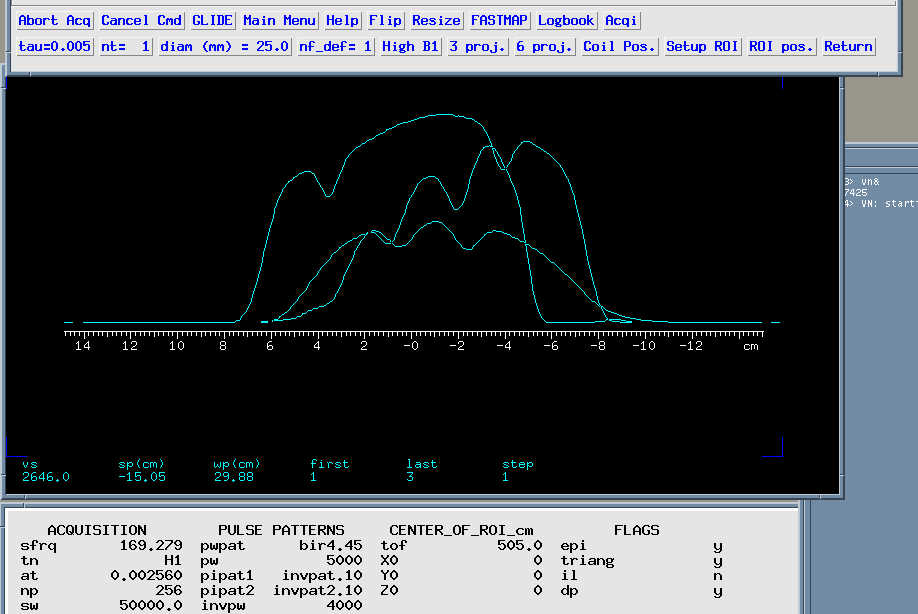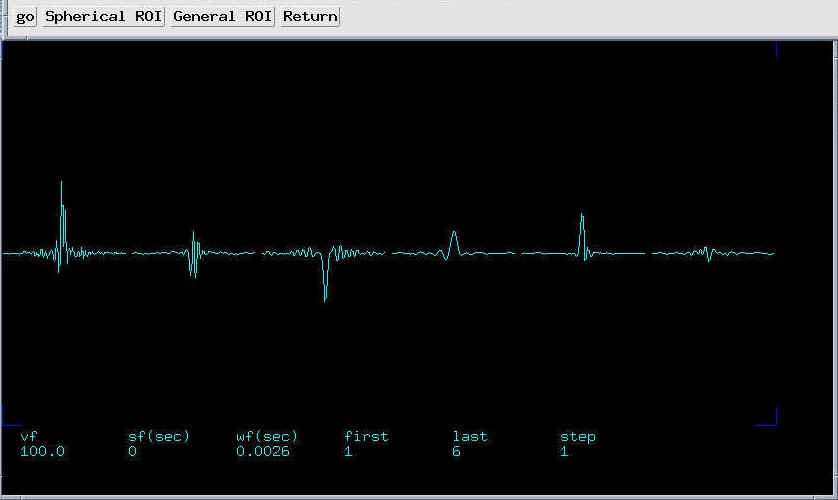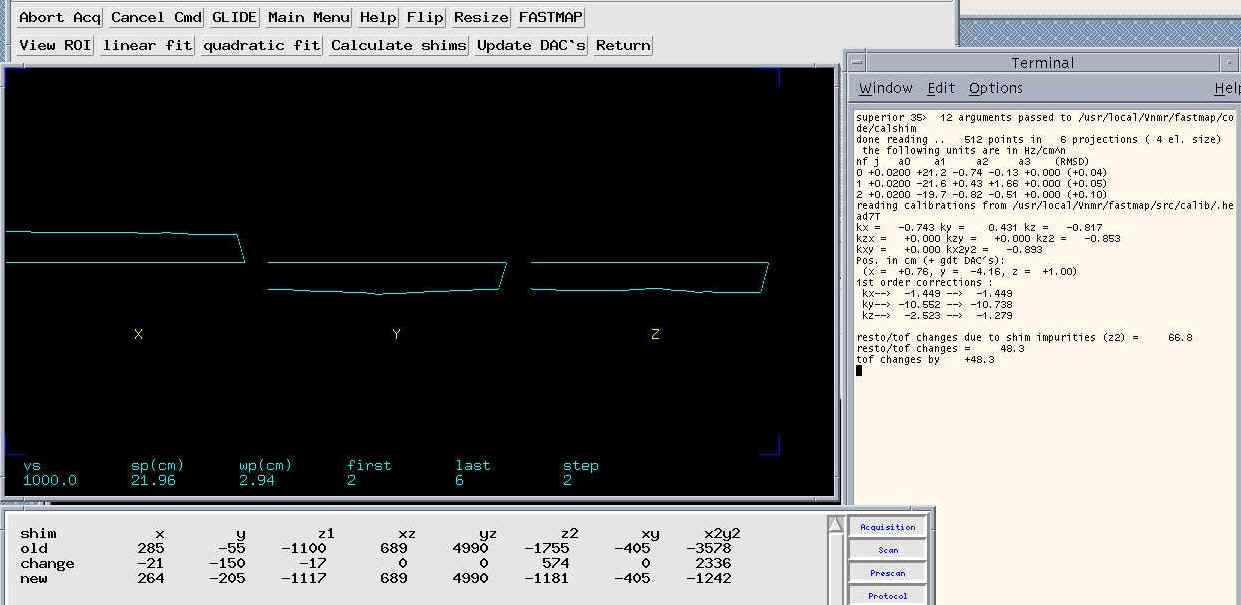
To test the basic performance of the sequence: in FASTMAP/Setup first click on "Voxel Pos.", which will start an acquisition along x, y and z and at the end display the x y and z projection (dss), as shown below. The important thing is to have enough signal-to-noise ratio at the center of the projection and to some spatial extent (depending on how big an area you use to get shim measurements).

If you do not see these 3 projections, check to see if gain and signal are ok:
To check that gain and signal are ok, use dfsh with vf=100 on the above three projections and you should see reasonably well described echoes for the projections collected in the order x, y and z.
 Then
adjust the vertical scale (vs) to see the projections (ho=0 vo=0 dss).
Then
adjust the vertical scale (vs) to see the projections (ho=0 vo=0 dss).
To verify performance of the FASTMAP field measurement, click on {Setup/3 proj.} (set default # of echoes to zero: {Setup/nf_def=0} and enter 0 which will set epi='n'). Now set tau to e.g. 0.005 or 0.01 in {Setup/tau} depending on quality of the shimset. Set tr to 2, or better 3 s. Now you are ready to run a test run by clicking "Return/Manual adjust/go". After the acquisition completes, click on {FASTMAP/Manual adjust/General ROI/quadratic fit} and watch the output in the shelltool or terminal window from which you started vnmr. The output should show some reasonable numbers for kx, ky, kz, kzx, etc. (Unreasonable #'s are NaN, caused e.g. by using tau=0).

The RMSD (#'s provided in parentheses for each of the six projections measured) should be very small, should be less than 0.1, but typically the numbers are on the order of 0.02-0.07 (Hz) for phantoms or even lower.
Another way to test performance is to measure the linewidth in a VOI from an aqueous, non-doped phantom. However, note that the success of this shim procedure assumes that your specific localization sequence is devoid of any eddy current effects. If eddy currents persist as can be judged from convergence of FASTMAP and substantial linewidths and -distortions in the localized sequence, manual adjustment of liner shims should provide substantial improvement. Proper adjustment of eddy current compensation is highly recommended however. See e.g. Terpstra et al. J. Magn. Reson. 131:139 1998 and refs therein [PDF file (120k)].